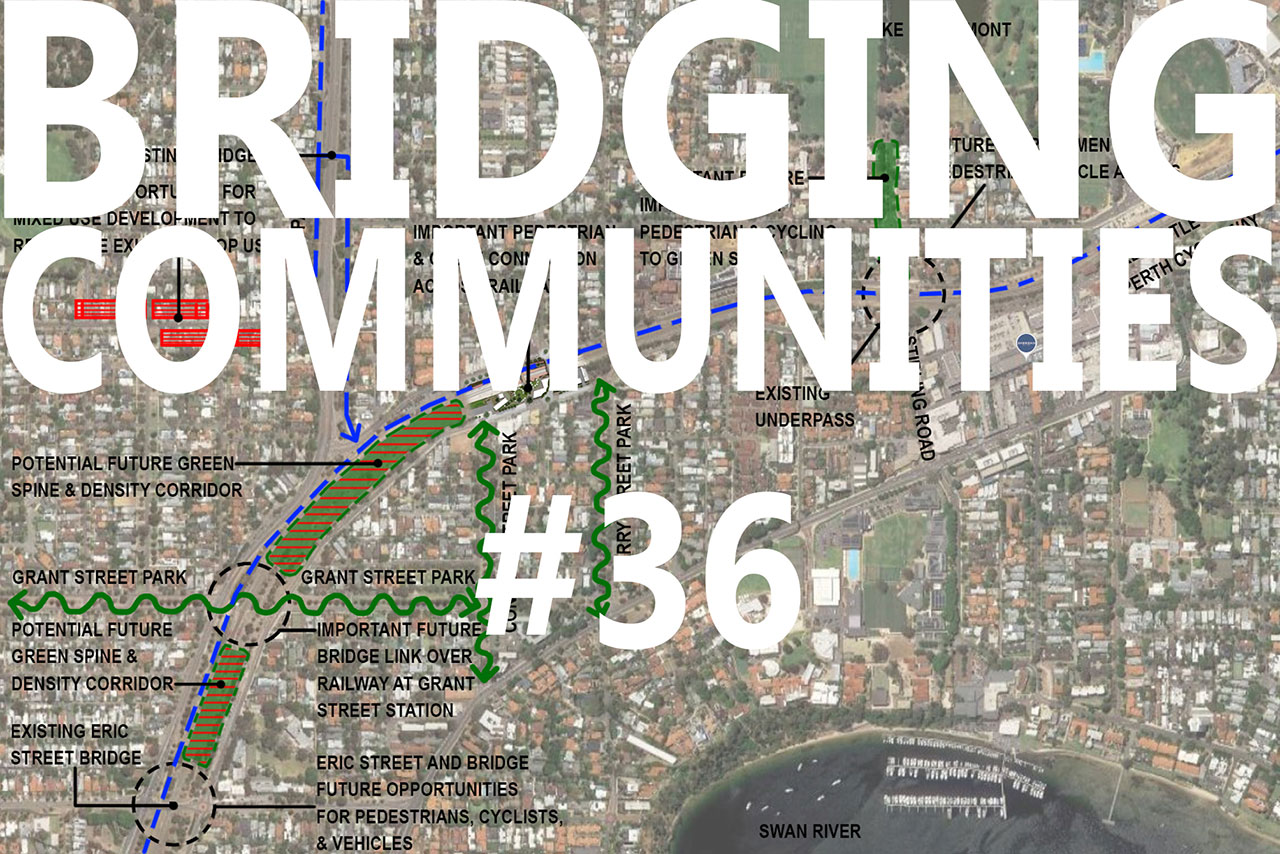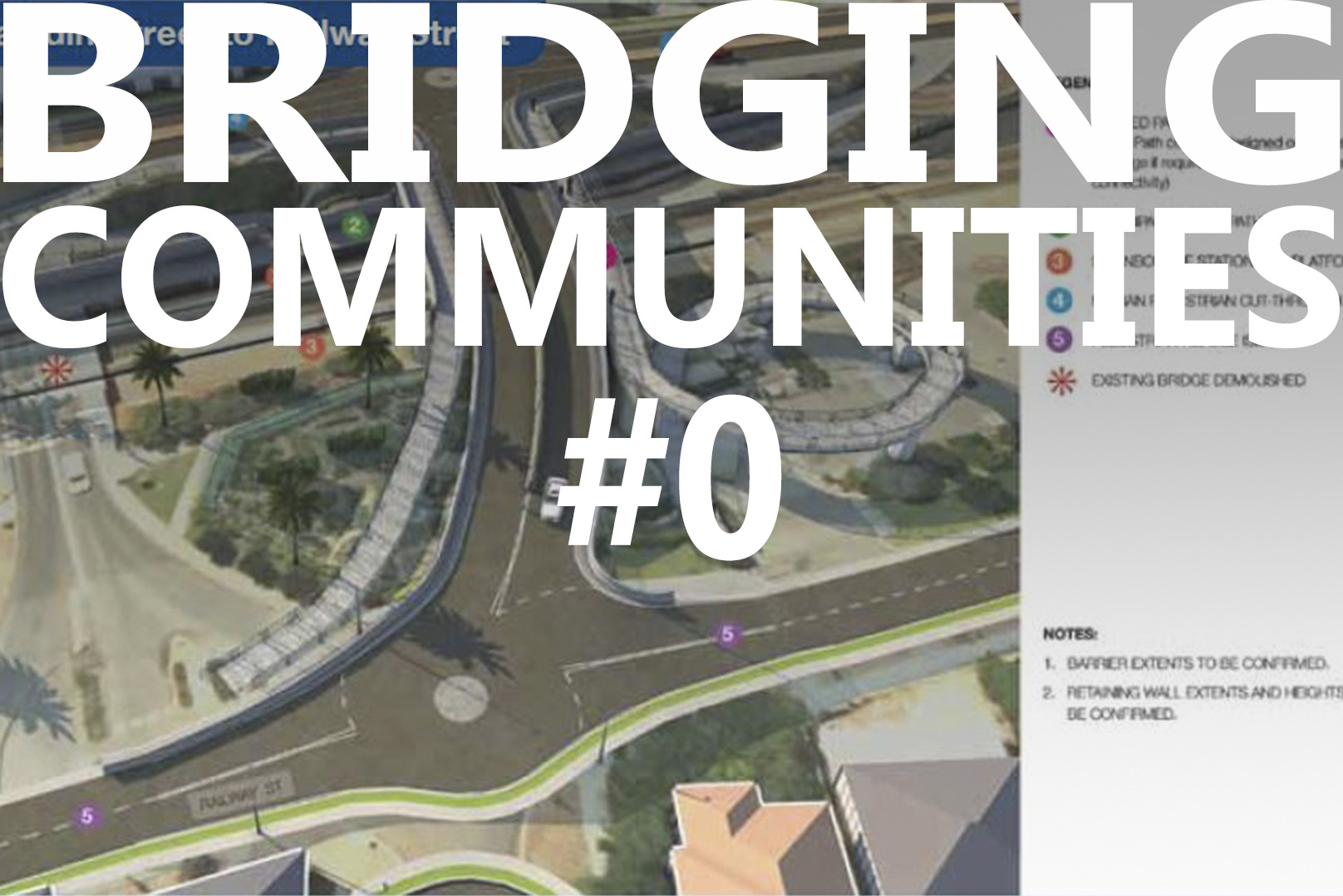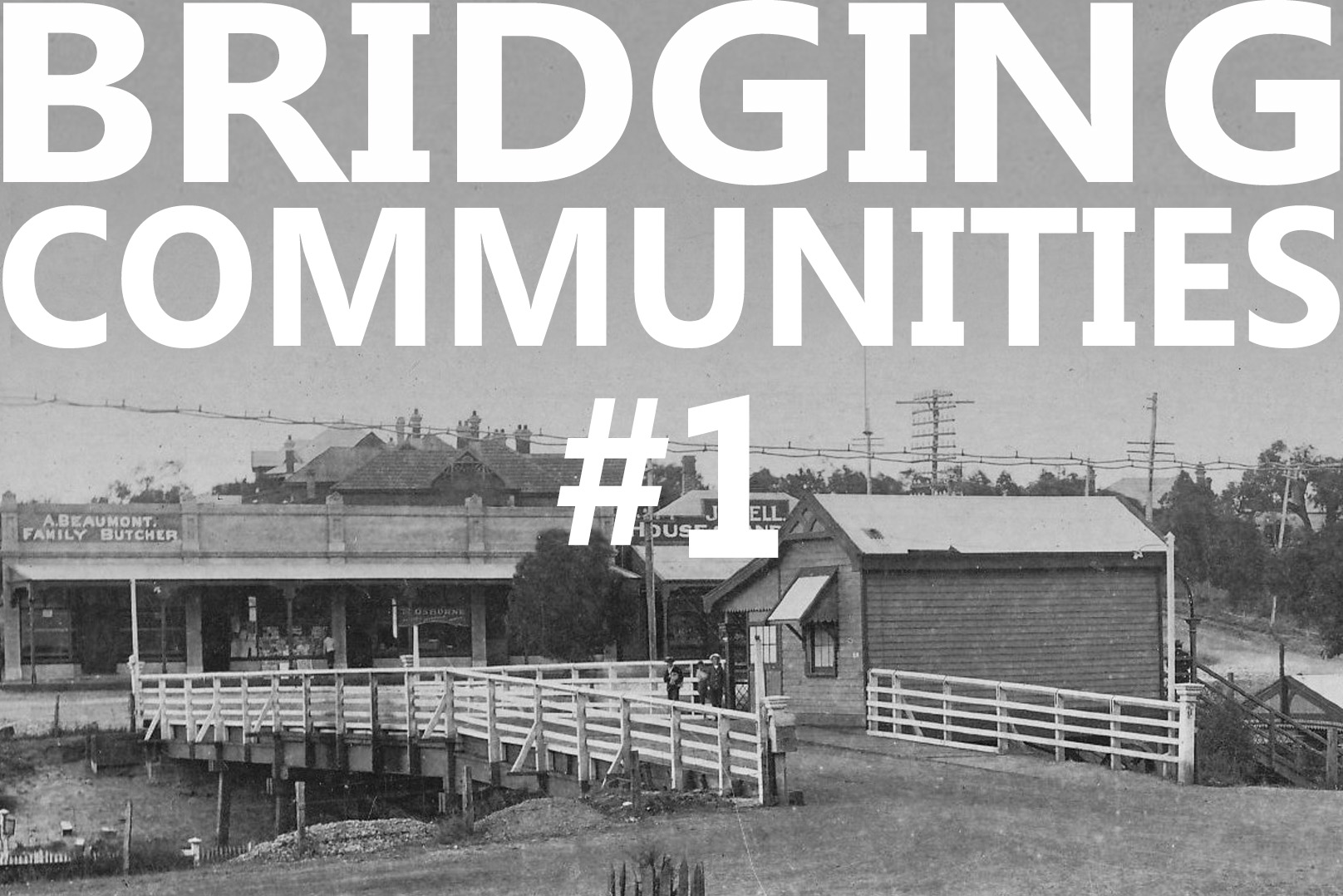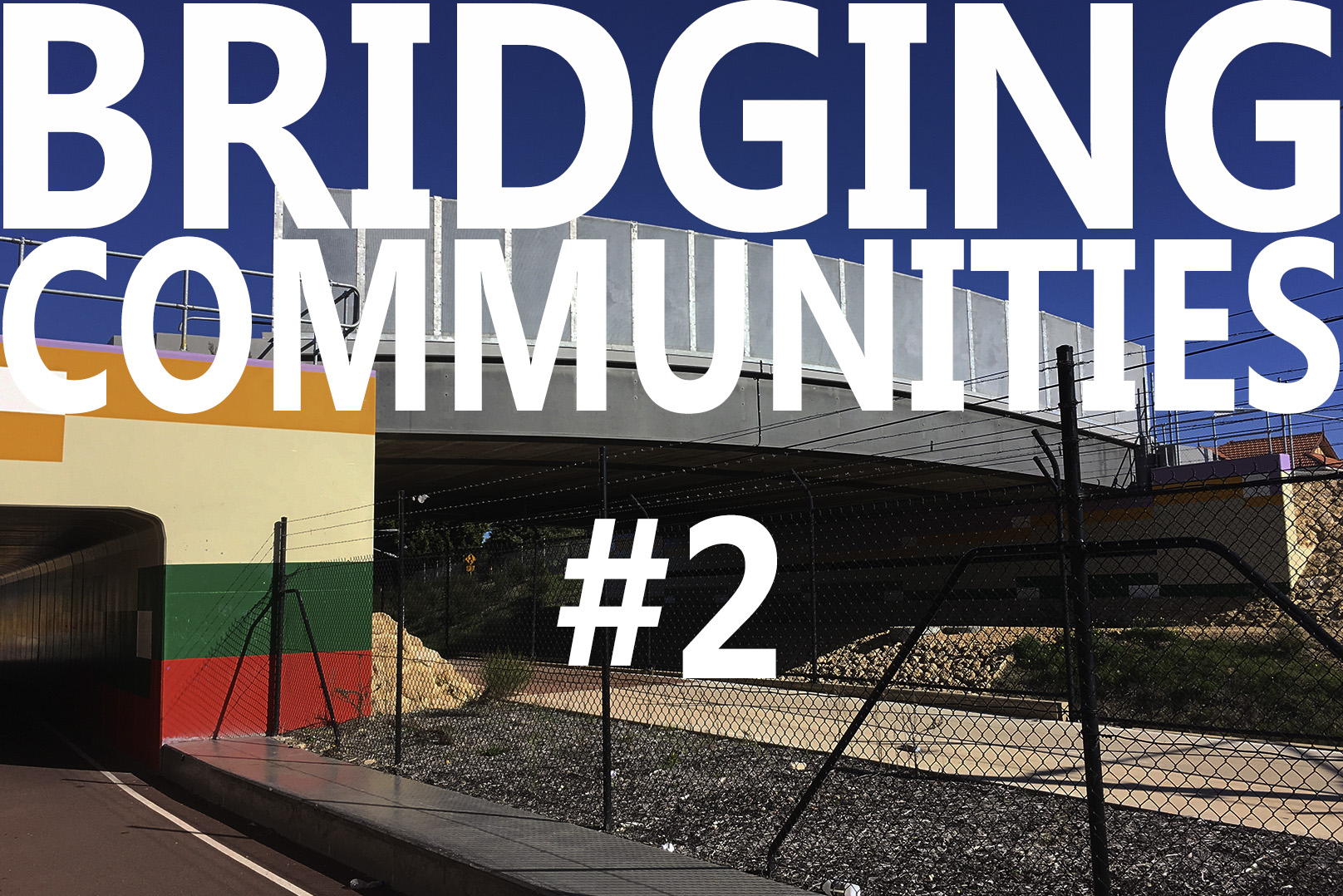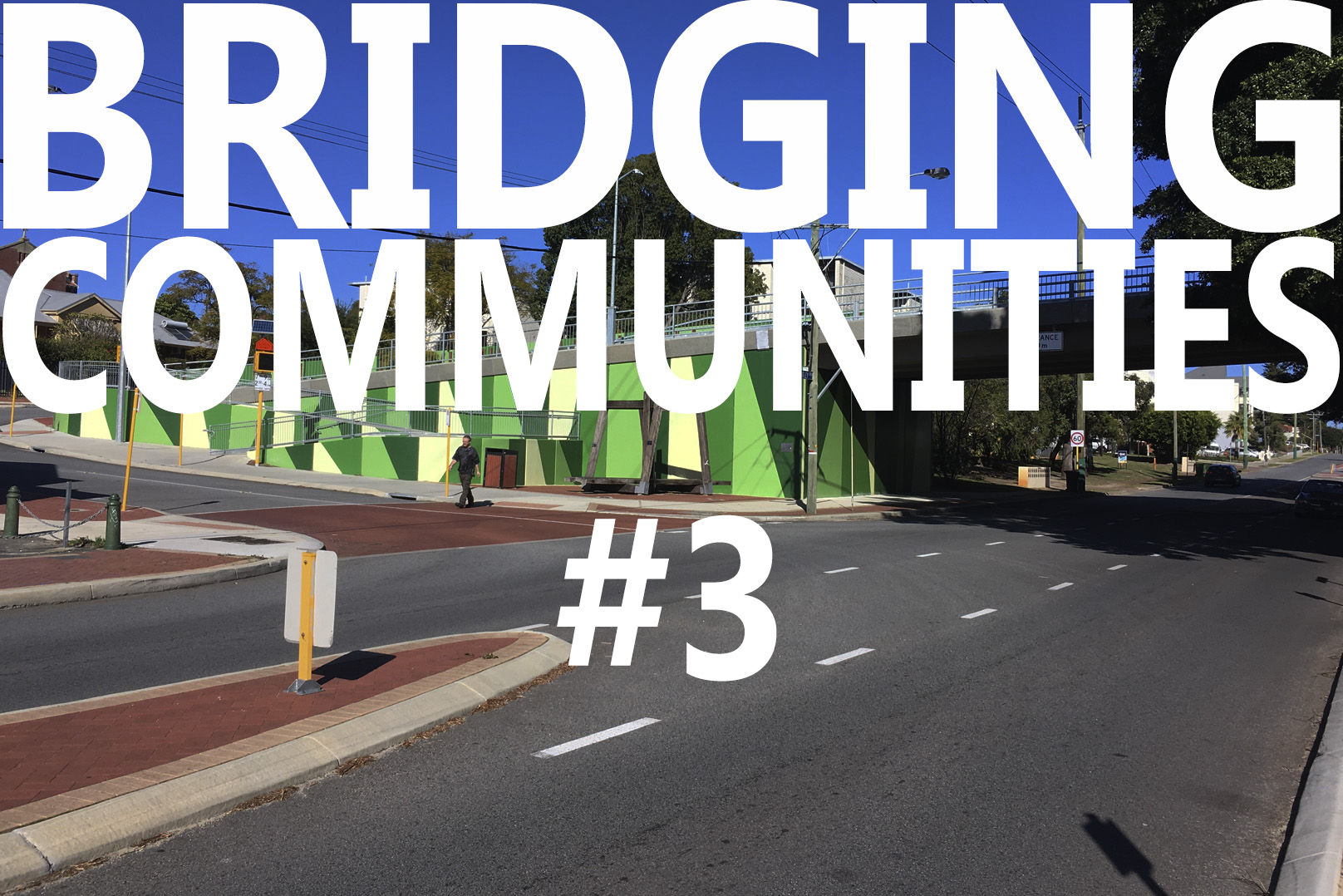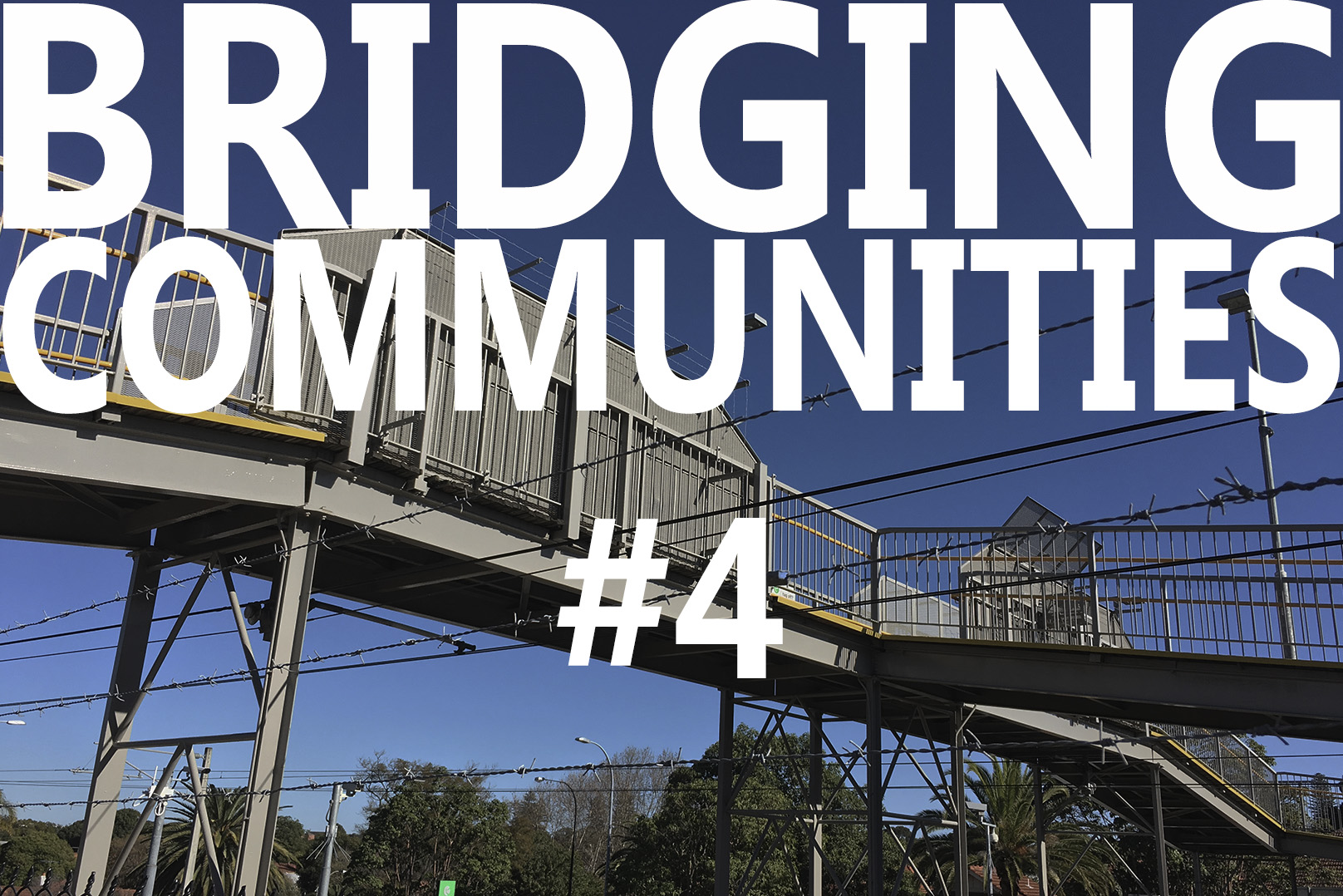Part of a series of posts by Neil Cownie on The Future of Swanbourne Village
The future opportunities for the development of Swanbourne Village needs to be seen within the greater context of the wider locality. From this diagram it can be seen that the existing bridge serves as the single train line crossing point for not only vehicles, but also for pedestrians and cyclists. The existing tenuous bridge link for community within the Swanbourne bridge is the ‘lifeline’ for the existing commercial businesses within the Swanbourne Village. Great opportunities exist to reinforce existing green space corridors as safe pathways for pedestrians and bicycles. Opportunity exists for expanding the current ‘cycling superhighway’ from Fremantle to Perth through increasing connectivity ‘tentacles’ out through the areas around the existing cycleway to safely connect cyclists and pedestrians.
Note the wide central park areas along Congdon Street and Parry Street that connect the southern side of the train line with Swanbourne Village, and the potential to link these pathways to the existing Grant Street central park area across the train line. A future ‘land bridge’ at the location of the Grant Street station would facilitate excellent connectivity for pedestrians and cyclists. Such a ‘land bridge’ would also complement improved bridge crossing opportunities within the Swanbourne Village.
The Public Transport Authority (PTA) train line land between the Swanbourne train station and the Grant Street train station also offers excellent opportunity for ‘land bridges’ to take advantage of the large changes in level on either side of the train line to seamlessly provide valuable land use over the train line. Such a ‘land bridge’ could not only provide opportunities for increased density in the form of apartments, but also to intermingle the built form with landscaped ‘green corridor’ space.
The PTA land along the trainline from Perth to Fremantle is like a time capsule of the original native vegetation that existed before the land clearing of the early European settlers. The vegetation contained within the barb wire and link mesh fence perimeter provides a snapshot form the past that enables us to see the original native bushland plants such as the Balga (Xanthorrhoea, or grass tree), Saw-tooth Banksia (Banksia Prionotes, or Orange Banksia), Zamia palms, Peppermint trees (Wonnil) and others. The Balga’s in particular capture my interest given that they grow at the rate of about 15mm per year which makes some of the Balga’s ‘captured’ within the PTA ‘time capsule’ over three hundred years old. I believe that these ‘captured’ plants, ‘caged’ for our visual enjoyment, are a special connection with our past.
Support from the State Government for the rejuvenation and enhancement of the Swanbourne train station precinct provides cost effective
Investment by the State Government in the rejuvenation and enhancement of the Swanbourne train station precinct can provide cost effective employment as we all recover from the Covid19 virus pandemic. The railway reserve land, owned by the State Government, is effectively a ‘land bank’ awaiting to be unlocked to release the wealth of the land. The end value of the partial development of the railway reserve land will more than pay for itself and for the proposed public facilities.
Go back to the The Future of Swanbourne Village
The Bridging Communities Series
- #0 The Precinct - Swanbourne Bridge
- #1 Old Swanbourne Bridge
- #2 Third Avenue Bridge
- #3 Seventh Avenue
- #4 Mt Lawley Station Bridge
- #5 Swanbourne Aboriginal History
- #6 Swanbourne European History
- #7 Swanbourne Hotel
- #8 Koombana Bay Bridge
- #9 BIG Bridge Copenhagen
- #10 Circle Bridge Copenhagen
- #11 Tulhus Bridge - Erik Andersson
- #12 RV73 Bridge - Erik Andersson
- #13 The Architect Bridge - Erik Andersson
- #14 Ruyi Bridge - China
- #15 Cork Ireland Bridge - O'Donnell + Tuomey Architects
- #16 Bat Bridge - Next Architects
- #17 Leederville & Claremont Bridges
- #18 Dawson's Garden Centre
- #19 Swanbourne Village
- #20 Cottesloe Central Bridge
- #21 Showgrounds Bridge
- #22 Art Overlays
- #23 Swanbourne Village - Parameters - Levels
- #24 Swanbourne Village - Parameters - Community Hub
- #25 Swanbourne Village - A Better Way
- #26 Swanbourne Village – Call in the Cavalry
- #27 Sydney Light Rail Bridge
- #28 Hamilton Street Bridge, Subiaco
- #29 Compare the Pair
- #30 Opportunity not a Barrier
- #31 Rose Garden Bridge
- #32 Somers Town Bridge
- #33 Swanbourne Village – Original Bridge
- #34 Bayswater Bridge
- #35 Main Roads WA Scheme
- #36 NCA Scheme – The Big Picture
- #37 NCA Scheme – Master Plan
- #38 NCA Scheme – Relocated Dawsons Garden Centre
- #39 NCA Scheme – New Built Form
- #40 NCA Scheme – A New Community Pedestrian Bridge
- #41 NCA Scheme – Proposed Train Station Precinct
- #42 NCA Scheme – Swanbourne Village Market Day
- #43 NCA Scheme – Pedestrian environment
- #44 NCA Scheme – Cultural overlay
- #45 NCA Scheme – Centre of Excellence for a Sustainable Future
- #46 NCA Scheme – An Alternative Pedestrian Bridge Design

